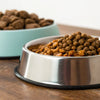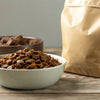Understanding How Many Grams in a Cup of Dry Dog Food: A Comprehensive Guide
- Houndsy
Table of Contents
- Introduction
- The Importance of Accurate Measurement
- How Many Grams in a Cup of Dry Dog Food?
- The Role of the Houndsy Kibble Dispenser
- Best Practices for Feeding Your Dog
- Common Questions About Dog Feeding
- Conclusion
Introduction
As dog owners, we all want the best for our furry companions. Feeding them the right amount of food is essential for their health and well-being, yet many of us struggle with the basics of portioning. Did you know that improper measurements can lead to underfeeding or overfeeding, both of which can have serious implications for your dog's health? It's true—according to a study by the British Veterinary Association, many pet owners do not measure their dog's food accurately, which can lead to obesity and associated health problems.
In this blog post, we will delve into the critical question: how many grams are in a cup of dry dog food? By the end of this article, you will gain a deeper understanding of measuring dog food accurately, the importance of portion control, and how to ensure that your beloved pet receives the right amount of nutrition. We will cover the nuances of measuring cups, the significance of weight in grams, and best practices for ensuring that your dog’s feeding routine is both effective and enjoyable.
As we walk through these details, we will also highlight our flagship product, the Houndsy Kibble Dispenser, which revolutionizes the dog-feeding experience with its innovative design and ergonomic convenience. Join us as we explore the world of dog nutrition, measurement accuracy, and how we can enhance the feeding ritual for both pets and their owners.
The Importance of Accurate Measurement
Why Measuring Food Matters
Feeding your dog the correct amount of food is crucial for maintaining their health. Overfeeding can lead to obesity, which is a growing concern among pets today. According to a study by the Association for Pet Obesity Prevention, an estimated 60% of pets in the United States are overweight or obese. This condition can lead to numerous health issues, including diabetes, joint problems, and reduced lifespan.
On the other hand, underfeeding can lead to malnutrition and a host of related health issues. Therefore, understanding how to measure dog food accurately is vital for your pet's overall well-being.
The Challenge of Measuring Cups
Most pet owners rely on measuring cups to portion out their dog's food, but not all measuring cups are created equal. An 8-ounce cup, often recommended by pet food manufacturers, can contain varying amounts of kibble based on the size and density of the food. For example, one brand's kibble may weigh significantly less or more than another brand's kibble, even if the volume is the same.
Additionally, many pet owners use kitchen measuring cups that are designed for liquids, which can lead to inaccuracies when measuring solid foods like kibble. This inconsistency in measurements can have serious repercussions for your pet's diet.
Weighing vs. Measuring
The gold standard for measuring pet food is weighing it in grams rather than relying on volume measurements. A kitchen scale allows for precise measurement, ensuring that your dog receives the correct amount of food every time. But how many grams are in a cup of dry dog food? This can vary widely depending on the brand and type of kibble.
To help you understand this better, let’s explore the average weight of dry dog food per cup.
How Many Grams in a Cup of Dry Dog Food?
General Guidelines
On average, one cup of dry dog food typically weighs between 80 to 120 grams, depending on the brand and kibble size. However, this can fluctuate significantly. For example, a cup of smaller kibble may weigh less than a cup of larger kibble due to the differing densities and sizes.
To illustrate this, let’s break down a few common types of dog food:
- Small Kibble (e.g., for toy breeds): 80-90 grams per cup
- Medium Kibble: 90-100 grams per cup
- Large Kibble (e.g., for larger breeds): 100-120 grams per cup
These figures can serve as a rough estimate, but the only way to know for sure is to weigh the specific kibble you are using.
Finding Accurate Measurements
To find out how many grams are in a cup of your dog’s specific kibble, it is best to consult the packaging. Many reputable dog food brands provide the weight of one cup in grams right on the label. If this information is not available, you can always reach out to the manufacturer directly.
Alternatively, you can conduct your own experiment:
- Get a Digital Scale: Invest in a kitchen scale that measures in grams.
- Tare the Weight: Place your measuring cup on the scale and tare it to zero.
- Fill the Cup: Add kibble until you fill the cup to the desired measurement (one cup).
- Record the Weight: Note the weight displayed on the scale to determine how many grams are in a cup of that specific kibble.
The Role of the Houndsy Kibble Dispenser
At Houndsy, we are committed to enhancing the everyday experience of pet owners, starting with the feeding ritual. Our Houndsy Kibble Dispenser is designed to eliminate the mess and inconsistency often associated with feeding. With its ergonomic crank system, you can dispense food at standing height, ensuring that you won't have to bend down to fill your dog's bowl.
Key Features
- Perfect Portion Control: The Houndsy Kibble Dispenser allows you to serve perfectly measured portions every time, making it easier to manage your dog's diet.
- Large Storage Capacity: With a capacity of 25-30 lbs, the dispenser keeps your pet's food fresh and readily available.
- Stylish Design: Our mid-century modern aesthetic ensures that the dispenser not only functions well but also complements your home decor.
- Safety Features: The auto-locking mechanism prevents accidental dispensing, keeping curious pets or toddlers safe.
With the Houndsy Kibble Dispenser, you can simplify your pet care routine while maintaining a healthy feeding regimen for your dog. Explore the Houndsy Kibble Dispenser here.
Best Practices for Feeding Your Dog
Creating a Routine
Establishing a consistent feeding routine can greatly improve your dog's digestion and overall behavior. Here are some tips to help you create a routine that works for both you and your dog:
- Scheduled Feeding Times: Feed your dog at the same times each day to create a rhythm. Most dogs thrive on routine.
- Portion Control: Use your scale to weigh out the correct portions based on your dog’s weight, age, and activity level.
- Monitor Body Condition: Regularly check your dog's body condition score to ensure they are maintaining a healthy weight. Adjust portions as necessary.
Adjusting for Activity Level
Consider your dog's activity level when determining how much food to provide. Active dogs may require more calories, while less active dogs may need fewer. Always consult with your veterinarian if you're unsure about how much food your dog should be eating.
Keeping Treats in Check
Treats can add significant calories to your dog's daily intake. Be mindful of how many treats you give and adjust the food portions accordingly. A good rule of thumb is to keep treats to no more than 10% of your dog's total daily caloric intake.
Common Questions About Dog Feeding
How can I tell if I'm overfeeding my dog?
If you notice your dog gaining weight, having difficulty moving, or displaying lethargy, it may be an indication that you are overfeeding. Regular vet check-ups can help monitor your dog's weight and health.
What is the best way to transition my dog to a new food?
When changing your dog's food, it's best to do so gradually over a week. Start by mixing a small amount of the new food with the old food, gradually increasing the new food while decreasing the old food. This can help prevent digestive upset.
How often should I feed my dog?
Generally, adult dogs should be fed twice a day, while puppies may require three to four meals. Always consider your dog's age, size, and activity level when determining feeding frequency.
Conclusion
Understanding how many grams are in a cup of dry dog food is essential for every pet owner. Accurate measurement plays a crucial role in maintaining your dog's health and preventing obesity. By weighing your dog’s food and utilizing innovative tools like the Houndsy Kibble Dispenser, you can elevate your feeding routine while ensuring your dog receives the proper nutrition.
We encourage you to explore different measuring methods and be proactive about your dog’s diet. If you’re looking for a stylish and functional solution to streamline your pet feeding experience, consider the Houndsy Kibble Dispenser. Order yours today and start simplifying your pet care routine!
FAQ
Q: How many grams are typically in a cup of dry dog food?
A: On average, one cup of dry dog food weighs between 80 to 120 grams, depending on the brand and kibble size.
Q: Is it better to measure dog food by weight or volume?
A: Weighing dog food by grams is the most accurate method to ensure that your dog receives the correct amount of food.
Q: How can I prevent my dog from becoming overweight?
A: Monitor your dog’s weight regularly, adjust food portions based on activity levels, and ensure treats are kept to a minimum.
Q: Should I consult my vet about my dog’s diet?
A: Yes, it's always a good idea to consult your veterinarian for personalized advice on your dog's diet and nutritional needs.
By keeping these insights in mind, we can all contribute to the health and happiness of our beloved pets!












